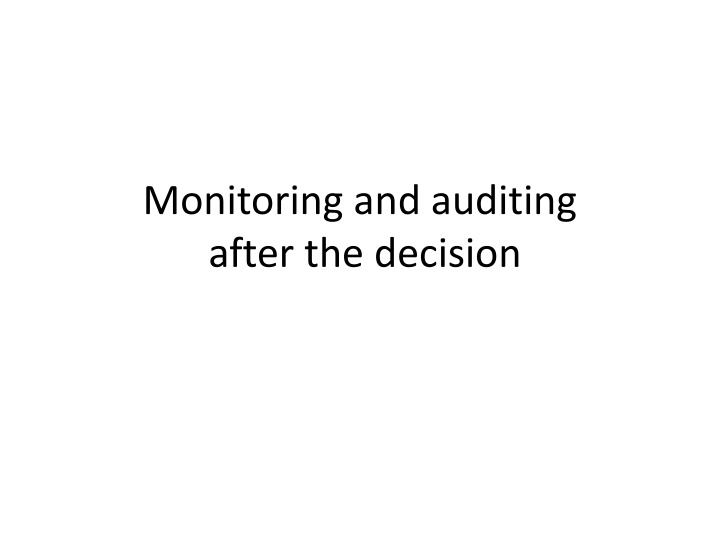
Monitoring, Auditing, and Impact Assessment in EIA Process
Explore the importance of monitoring and auditing in the decision-making process of Environmental Impact Assessment (EIA). Learn about the different points of audit, including project impact audits and procedures audit, to ensure compliance and improve future projects.
Download Presentation

Please find below an Image/Link to download the presentation.
The content on the website is provided AS IS for your information and personal use only. It may not be sold, licensed, or shared on other websites without obtaining consent from the author. If you encounter any issues during the download, it is possible that the publisher has removed the file from their server.
You are allowed to download the files provided on this website for personal or commercial use, subject to the condition that they are used lawfully. All files are the property of their respective owners.
The content on the website is provided AS IS for your information and personal use only. It may not be sold, licensed, or shared on other websites without obtaining consent from the author.
E N D
Presentation Transcript
Monitoring and auditing after the decision
Monitoring involves the measuring and recording of physical, social and economic variables associated with development impacts (e.g. traffic flows, air quality, noise, employment levels). Monitoring can improve project management. It can be used, for example, as an early warning system, to identify harmful trends in a locality before it is too late to take remedial action. It can help to identify and correct unanticipated impacts.
Seven different points of audit in the EIA process: decision point audit (draft EIS) by regulatory authority in the planning approval process. decision point audit (final EIS) also by regulatory authority in the planning approval process. implementation audit to cover start up; it could include inspection by the government and the public and focus on the compliance with mitigation and other imposed conditions. performance audit to cover full operation; it could also include government and public inspection. predictive techniques audit to compare actual with predicted impacts as a means of comparing the value of different predictive techniques
project impact auditsalso to compare actual with predicted impacts and to provide feedback for improving project management and for future projects. procedures audit external review (e.g. by the public) of the procedures used by the government and industry during the EIA processes.








